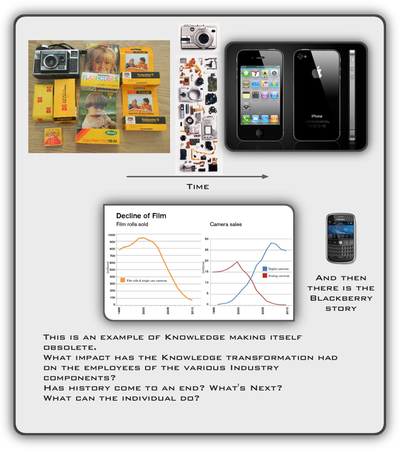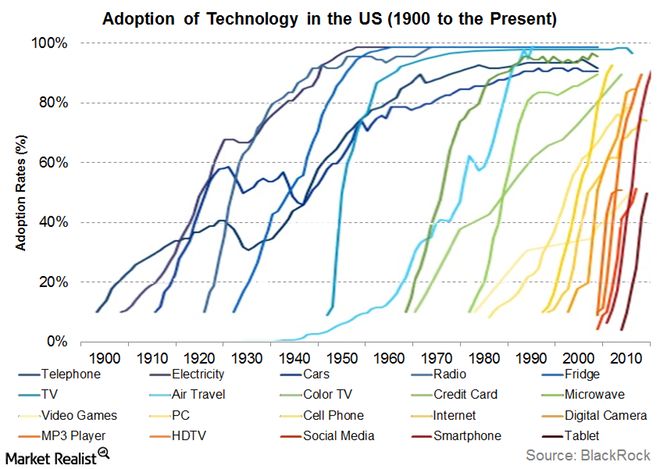Abandonment
“People in any organization are always attached to the obsolete—the things that should have worked but did not, the things that once were productive and no longer are.” ― PFD

At what point ↑ ↓ should abandonment begin?

A critical question for leaders is, “When do you stop pouring resources
into things that have achieved their purpose?”
The most dangerous traps for a leader are those near-successes
where everybody says that if you just give it another big push
it will go over the top. One tries it once. One tries it twice.
One tries it a third time. But, by then it should be obvious
this will be very hard to do.
So, I always advise my friend Rick Warren,
“Don’t tell me what you’re doing, Rick.
Tell me what you stopped doing.” — Drucker on Leadership
The failed strategy
(calendarize this?)

From Innovation and Entrepreneurship
There is only one way to make innovation attractive to managers: a systematic policy of abandoning whatever is outworn, obsolete, no longer productive, as well as the mistakes, failures, and misdirections of effort.
Every three years or so, the enterprise must put every single product, process, technology, market, distributive channel, not to mention every single internal staff activity, on trial for its life.
It must ask: Would we now go into this product, this market, this distributive channel, this technology today?
If the answer is “No,” one does not respond with, “Let’s make another study.”
One asks, “What do we have to do to stop wasting resources on this product, this market, this distributive channel, this staff activity?”
Sometimes abandonment is not the answer, and may not even be possible.
But then at least one limits further efforts and makes sure that productive resources of men and money are no longer devoured by yesterday.
This is the right thing to do in any event to maintain the health of the organization: every organism needs to eliminate its waste products or else it poisons itself.
It is, however, an absolute necessity, if an enterprise is to be capable of innovation and is to be receptive to it.
“Nothing so powerfully concentrates a man’s mind as to know that he will be hung on the morning,” Dr. Johnson was fond of saying.
Nothing so powerfully concentrates a manager’s mind on innovation as the knowledge that the present product or service will be abandoned within the foreseeable future.
Innovation requires major effort.
It requires hard work on the part of performing, capable people—the scarcest resource in any organization.
“Nothing requires more heroic efforts than to keep a corpse from stinking, and yet nothing is quite so futile,” is an old medical proverb.
In almost any organization I have come across, the best people are engaged in this futile effort; yet all they can hope to accomplish is to delay acceptance of the inevitable a little longer and at great cost.
But if it is known throughout the organization that the dead will be left to bury their dead, then the living will be willing—indeed, eager—to go to work on innovation.
To allow it to innovate, a business has to be able to free its best performers for the challenges of innovation.
Equally it has to be able to devote financial resources to innovation.
It will not be able to do either unless it organizes itself to slough off alike the successes of the past, the failures, and especially the “near-misses,” the things that “should have worked” but didn’t.
If executives know that it is company policy to abandon, then they will be motivated to look for the new, to encourage entrepreneurship, and will accept the need to become entrepreneurial themselves.
This is the first step—a form of organizational hygiene.

From The Daily Drucker
5 JAN — Abandonment
There is nothing as difficult and as expensive, but also nothing as futile, as trying to keep a corpse from stinking.
Effective executives know that they have to get many things done effectively.
Therefore, they concentrate.
And the first rule for the concentration of executive efforts is to slough off the past that has ceased to be productive.
The first-class resources, especially those scarce resources of human strength, are immediately pulled out and put to work on the opportunities of tomorrow.
If leaders are unable to slough off yesterday, to abandon yesterday, they simply will not be able to create tomorrow.
Without systematic and purposeful abandonment, an organization will be overtaken by events.
It will squander its best resources on things it should never have been doing or should no longer do.
As a result, it will lack the resources, especially capable people, needed to exploit the opportunities that arise.
Far too few businesses are willing to slough off yesterday, and as a result, far too few have resources available for tomorrow.

From Managing in the Next Society
Do you believe that an organization should be involved in the process of creative destruction, such as that described by Clayton M Christensen in The Innovator’s Dilemma?
Absolutely, but this needs to be an ongoing process and it has to be organized.
Let me give you an example of a company that I’ve worked with.
A fairly big one.
A leader in a worldwide specialized field.
And every three months, a group of people from the organization—younger people, junior people, but never the same people sits down and looks at one segment of the company’s products, or services, or process, or policies with a question: If we didn’t do this already, would we go into it the way we are now?
And if the answer is no, then the question is, What would we do?
Every four or five years, that company has systematically abandoned or at least modified every single one of its products and processes, and especially its services.
That’s the secret of its growth and its profitability.
A company should be able to eliminate its waste.
The human body does it automatically.
In the corporate body, there is enormous resistance.
Abandonment isn’t that easy, and don’t underrate the effect abandonment can have.
It has a tremendous impact on the mind-set of the people and the organization.
Sometimes a so-called improvement can become a new product.
Of the people and companies I know, 70 percent of the new comes from a slight modification of what already exists.
The best example I know is probably GE Medical Electronics.
They’re a world leader, but not many of their products have come out of innovation.
More have come out of improvement.

Inability to Abandon
The last of the administrator’s deadly sins is the most damning and the most common: the inability to abandon.
It alone guarantees non-performance, and within a fairly short time.
Where to jump next?

Traditional political theory, the theory inherited from Aristotle, holds that the tasks of government are grounded in the nature of civil society and thus immutable: defense, justice, law, and order.
But very few of the tasks of modern public administration, whether governmental or non-governmental public service institutions—such as the hospital, the Red Cross, the university, or the Boy Scouts—are of that nature.
Almost all of them are man-made, rather than grounded in the basic essentials of society.
And most of them are of very recent origin, to boot.
They all, therefore, have in common that they must become pointless fairly fast.
They may become pointless because the need to which they address themselves no longer exists or is no longer urgent.
They may become pointless because the old need appears in such a new guise as to make obsolete present design, shape, concerns, and policies.
The great environmental problem of 1910, for instance—and it was a very real danger—was the horrendous pollution by the horse, with its stench, and its liquid and solid wastes, which threatened to bury the cities of that time.
If we had been as environmentally conscious then as we are now, we would have saddled ourselves with agencies which only ten years later would have become totally pointless and yet, predictably, ten years later would have redoubled their efforts, since they would have totally lost sight of their objectives.
But also, a program may become pointless when it fails to produce results despite all efforts, as do our present American welfare programs.
And finally, most dangerous of them all, a program becomes pointless when it achieves its objectives.
That we have a “welfare mess” today is, in large measure, a result of our having maintained the welfare programs of the New Deal after they had achieved their objectives around 1940 or 1941.
These programs were designed to tackle the problems caused by the temporary unemployment of experienced (and almost entirely white) male heads of families—no wonder that they then mal-performed when applied to the totally different problems that were caused ten or fifteen years later by the mass movement of black females without skills or work experience from rural poverty into city slums.
The basic assumption of public service institutions, governmental or non-governmental ones alike, is immortality.
It is a foolish assumption.
It dooms the organization and its programs to non-performance and non-results.
The only rational assumption is that any public service program will sooner or later—and usually sooner—outlive its usefulness, at least in its present form, in respect to its present objectives, and with its present policies.
A public service program that does not conduct itself in contemplation of its own mortality becomes incapable of performance.
In its original guise it cannot produce results any longer; the objectives have either ceased to matter, have proven unobtainable, or have been attained.
Indeed, the more successful a public service agency is, the sooner will it work itself out of the job.
And then it can only become an impediment to performance if it refuses to abandon.
The “March of Dimes,” which refused to liquidate itself after it had brilliantly accomplished the feat of conquering polio for which it had been organized, and which then became just another money-waster, is only one example.
The public service administrator who wants results and performance will thus increasingly have to build into his own organization an organized process for abandonment.
He will have to learn to ask every few years: “If we did not do this already, would we now—knowing what we know now—go into it?”
And if the answer is No, he better not say: “Let’s make another study,” or: “Let’s ask for a bigger budget.”
He should ask: “How can we get out of this?” or at least: “How can we stop pouring more effort, more resources, more people into this?”
Toward the Next Economics and Other Essays

More
 The New Japanese Business Strategies The New Japanese Business Strategies
 The Definitive Drucker The Definitive Drucker
What Do You Have To Abandon To Create Room For Innovation?
 The Effective Executive The Effective Executive
 Management Challenges for the 21st Century (the change leader) Management Challenges for the 21st Century (the change leader)
 Management, Revised Edition Management, Revised Edition
 Managing for the Future Managing for the Future
Note to self: unable to find quote: same as new capital appropriation and GE selling off profitable companies
List of topics in this Folder
|
![]()
